I have a MicroBot Push - looks like this:
Below the blue ring on the top is a capacitive touch pad and a TTP223-BA6 controller. Here's what it looks like under the hood.
It's a long story, but I need to be able to trigger that touch pad automatically (from an Arduino over USB, ideally). Interfacing over Bluetooth (the recommended way) isn't an option for a variety of reasons.
Today I tried placing a dime over that ring, then touching a small grounded wire to it. It worked! Until you don't touch it for at least four seconds, in which case this part of the datasheet appears to come into play:
- Auto calibration for life
At low power mode the re-calibration period is about 4.0sec normally, When key detected touch and released touch, the auto re-calibration will be redoing after about 16sec from releasing key
After that magic ~4-16 second window, my solution no longer works. If I take the dime off and try to trigger it with my finger, it feels "hard" - I have to press extremely hard to trigger the sensor. Wait four seconds, and it's back to normal. It seems like it's "learning" the capacitance of the dime, which ruins my ability to control it.
How can I consistently fool the capacitive sensor on demand? Other questions recommend foil (which I've tried), but many are pointed toward capacitive screens, not these one-key sensors.
Is there something I'm missing here? Could I use an electromagnet, or capacitor in some configuration? There seems to be (relatively) precious little information out there - or I just don't know how to look for it!
I'd really like to design this as simply and as close to solid-state as possible. If there's a relay involved, so be it - but beyond that, I may as well push the button directly.
